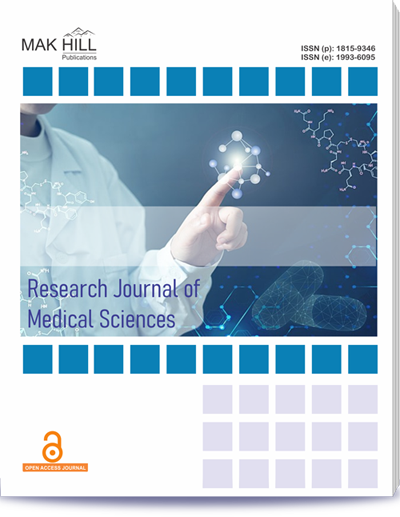
Research Journal of Medical Sciences
ISSN: Online 1993-6095ISSN: Print 1815-9346
Abstract
The Liechtenstein tension‐free hernioplasty began in 1984 and evolved (between 1984 and 1988) to a procedure that is now considered the gold standard of hernia repair by the American College of Surgeons. The worldwide reported result of the operation by experts and non‐experts alike is a recurrence and complication rate of <1%. There is a need to not only decrease an extensive dissection in the inguinal canal with less manipulation of the inguinal nerves, but also to minimize the interaction between the mesh and major surrounding structures. As a result, placing the mesh in the preperitoneal space is a valuable option. The data was obtained from 50 patients undergoing hernioplasty (25 by LR and 25 by PPMR) in the Department of General Surgery, of a tertiary care center, with a follow up period of 3‐18 months. Randomized comparative study was done. Consent for the procedure was obtained from patients. LR and PPMR procedures were performed using Polypropylene mesh. The mean operative time required for LR was 102 minutes and that for PPMR 110 minutes. 28% of the LR patients had a pain score of 5‐6 according to visual analogue scale and 8% of the PPMR patients had a pain score of 5‐6. Minor complication rate was 16% for LR group and 12% for PPMR group. The recurrence in LR and PPMR group was equal with a recurrence rate of 4%. The hospital stay in LR group was 8.2 days and 7.32 days in PPMR group. Liechtenstein mesh repair has significantly less duration of surgery when compared to the Open pre‐peritoneal repair. For surgeons in training the Liechtenstein open mesh technique is a better choice of inguinal hernia repair than other PPMR hernia repairs.
How to cite this article:
Durga Kusuma Rayudu, Shwetha Chandra, Anil Kumar and Robin Prabhu. Inguinal Hernia Repair: Contrasting Open Preperitoneal Mesh vs Lichtenstein Technique.
DOI: https://doi.org/10.36478/10.59218/makrjms.2023.12.352.356
URL: https://www.makhillpublications.co/view-article/1815-9346/10.59218/makrjms.2023.12.352.356